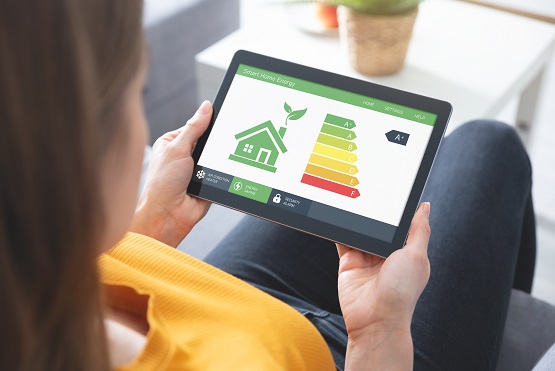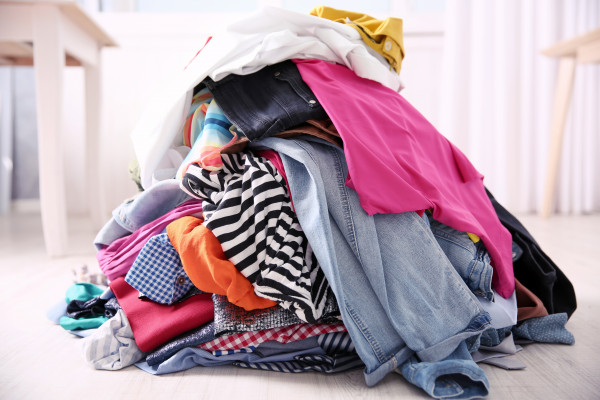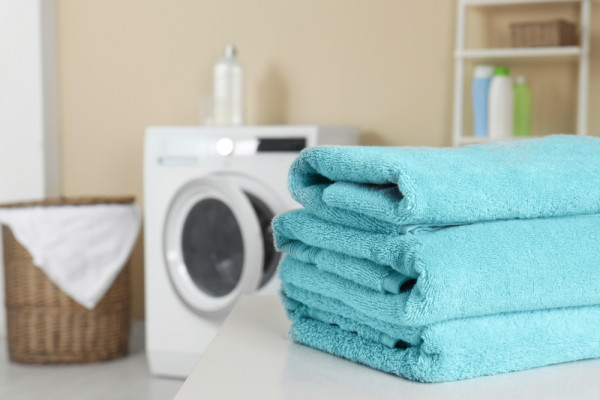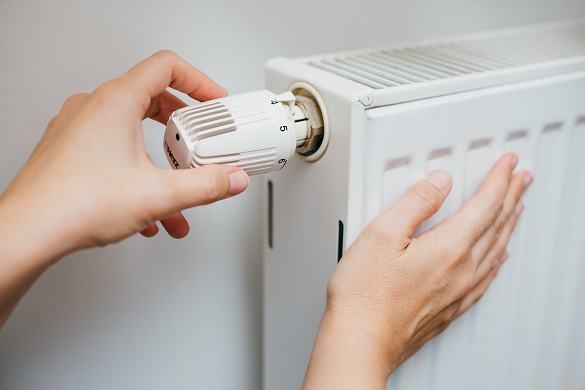In the wet and windy UK, we can’t hang laundry outside for much of the year. So perhaps you’re looking at buying a tumble dryer and wondering how much they cost to run. Or maybe you have a dryer and want to check it’s running efficiently. Either way, we’ll show you how to cut the cost of running a tumble dryer and save precious energy.
How much does it cost to run a tumble dryer?

Sadly, there isn’t a simple answer to the question ‘How much does it cost to run a tumble dryer?’. The actual cost for you will depend on three factors:
- The cost of electricity at the time
- The type of tumble dryer you have
- How efficiently you use the dryer
As of October 2022, the average price of electricity was 34p per kWh in England, Scotland and Wales. You can always try to find a cheaper electricity deal, but that’s a topic for a whole other article. So that leaves us with the type of dryer you have and how efficiently you use it.
How much it costs to run different types of tumble dryer
First, you’ll want to know about the three types of dryer: vented, condenser and heat pump. Each type has a typical running cost that you can weigh up against the cost of the dryer, if you’re planning to buy one.
Vented tumble dryers
A vented tumble dryer takes moisture from your clothes and carries it outside through a vent. For this reason, you may need a professional to install the dryer if the vent passes through a wall.
Vented dryers are often the cheapest models to buy, but the least energy efficient. As of 2022, most of the vented tumble dryers on offer had an energy rating of C.
Looking at a typical vented dryer — the Indesit I1 D80S 8 kg — its energy consumption for a full load is 5.02 kWh. Going by the electricity price in England, Scotland and Wales in October 2022, this Indesit vented dryer will cost you roughly £1.70 per cycle.
Condenser tumble dryers
A condenser tumble dryer uses hot air to take the moisture from your clothes and condense it into a tank. Unless the dryer is plumbed in, this means you have to empty the tank after each cycle.
So how much does it cost to run a condenser tumble dryer? Taking the Hotpoint H2 D81W UK 8 kg condenser dryer as an example, it uses 4.75 kWh per cycle. That adds up to £1.61, or 9p less per cycle than the Indesit vented dryer.
Heat pump tumble dryers
Heat pump tumble dryers are typically much more energy efficient than the other two types. What is a heat pump tumble dryer then, and how much does it cost to run?
Heat pump dryers use hot air to remove moisture from your clothes and store it in a tank. At first, this sounds the same as a condenser dryer. But while a condenser dryer pushes the hot air out, a heat pump dryer dries the clothes again with that same air. This means a heat pump dryer has to heat up much less, making it more efficient.
For instance, the SAMSUNG Series 5 OptimalDry DV80TA020AE/EU 8 kg Heat Pump Tumble Dryer uses 1.85 kWh per cycle. That will cost you £0.63 per cycle, which is 98p less than the Hotpoint condenser dryer and £1.07 less than the Indesit vented dryer.
To find out more, see our guide to choosing the best tumble dryer.
Tips to keep your dryer costs down
With the cost of living on everyone’s minds, it’s a great time to check you’re not wasting energy. According to the Energy Saving Trust, making a few changes at home could save you up to £564 a year.
Of course, reducing your tumble dryer costs is only a small part of the energy savings you could make overall. But as they’re some of the most energy-hungry appliances, our dryers may be the right place to start. And by making your tumble dryer energy efficient you’ll also be doing the environment a favour. So let’s dive in to the ways you can cut the cost of running a tumble dryer.

Shop for a more efficient model

All dryers come with energy ratings — they start with ‘A’ and go all the way down to ‘G’. An ‘A’ rating is given to those that are the most energy efficient, and a ‘G’ rating for the least. On average, the higher the energy rating of your dryer, the cheaper it’ll be to run.
Use your dryer wisely
Even in the not-so-tropical UK, there are many days when you can dry clothes outside. Try to save the tumble dryer for when the weather’s not friendly, or when you need things to dry quickly.
If you’re not sure what can go in the tumble dryer, see our tumble dryer dos and don’ts.
Dry larger loads instead of individual items

First things first – overloading your dryer isn’t the solution here. A stuffed dryer is prone to breaking or running into issues and could end up needing a professional repair. However, in terms of keeping your bills down, tumble drying a couple of t-shirts or a pair of socks won’t help.
Keep your dryer in a warm room
If your fridge is in a hot room, it has to work harder to keep things cool, right? Well, the opposite goes for dryers – when they’re in a cold spot, they spend more energy heating up the air. And if you can’t put your dryer somewhere warm, you can always draught-proof the room where it is now.
Wash similar materials together
Washing and drying similar fabrics together can reduce your energy use, because they will dry at the same speed. On the other hand, if you put different fabrics in together you’ll be over-drying some and under-drying others. That isn’t the most efficient way to dry things, so you’re missing out on shorter cycles that cost less.
Get it regularly serviced

Like any appliance, your dryer is likely to become less efficient over time, which will mean it uses more energy. It might have a breakdown, get damaged in an accident or simply suffer from gradual wear and tear.
To keep yours efficient for as long as possible, you might consider getting tumble dryer protection.
Our blog is loaded with more related articles

Tumble dryer tips
How to dry your clothes indoors in winter
Find out how to use your tumble dryer more efficiently over the winter, alongside some alternative ways you can dry your clothe...
Read more

Tumble dryer tips
Tumble dryer buying guide: what to look for in a new dryer
Looking for a new tumble dryer but feeling overwhelmed by the options? Our buying guide covers everything from capacity to ener...
Read more

Plumbing and heating tips
Radiator troubleshooting advice
Looking for radiator help? Read on to find out what to do if your radiators are cold, how to bleed a radiator and other radiato...
Read more
